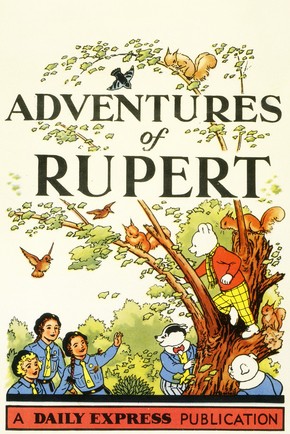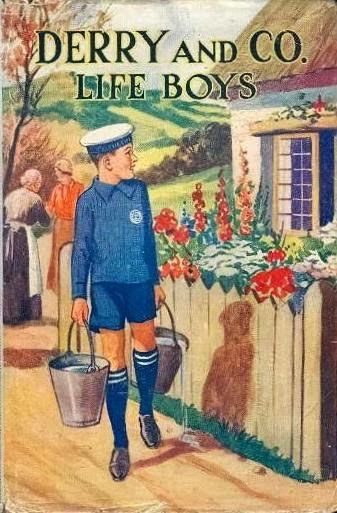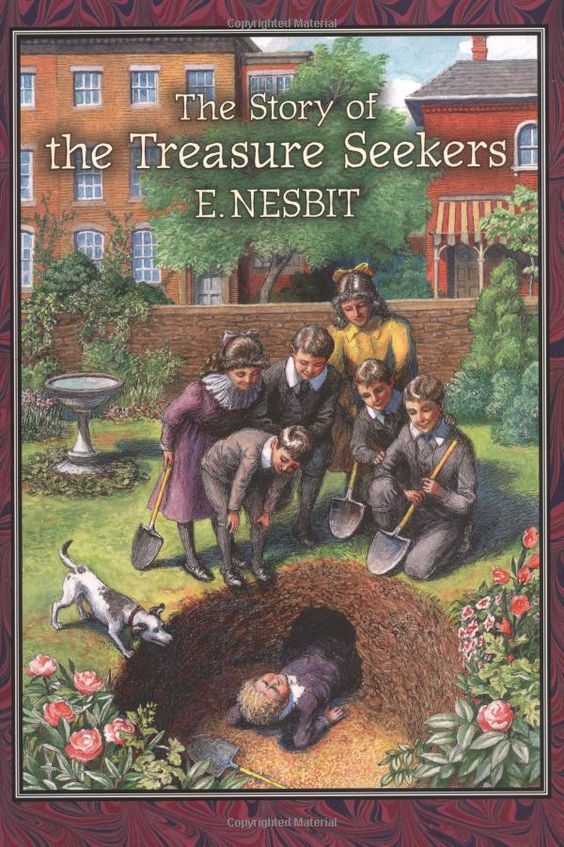|
|
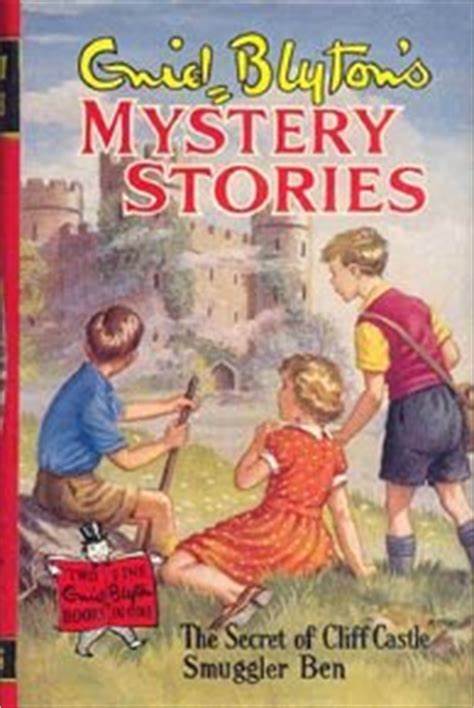 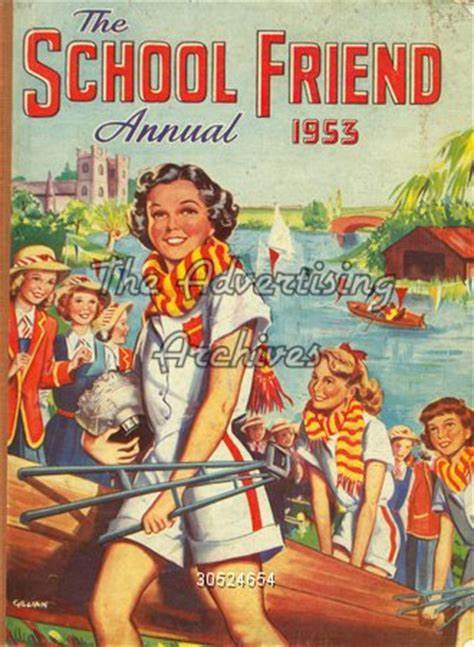 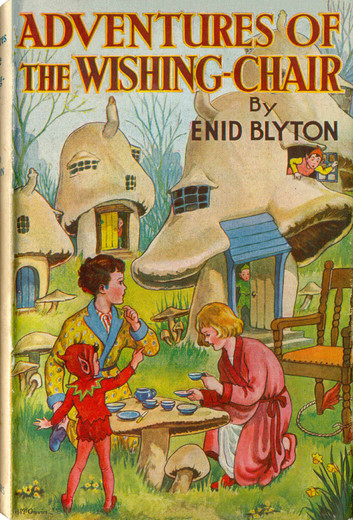 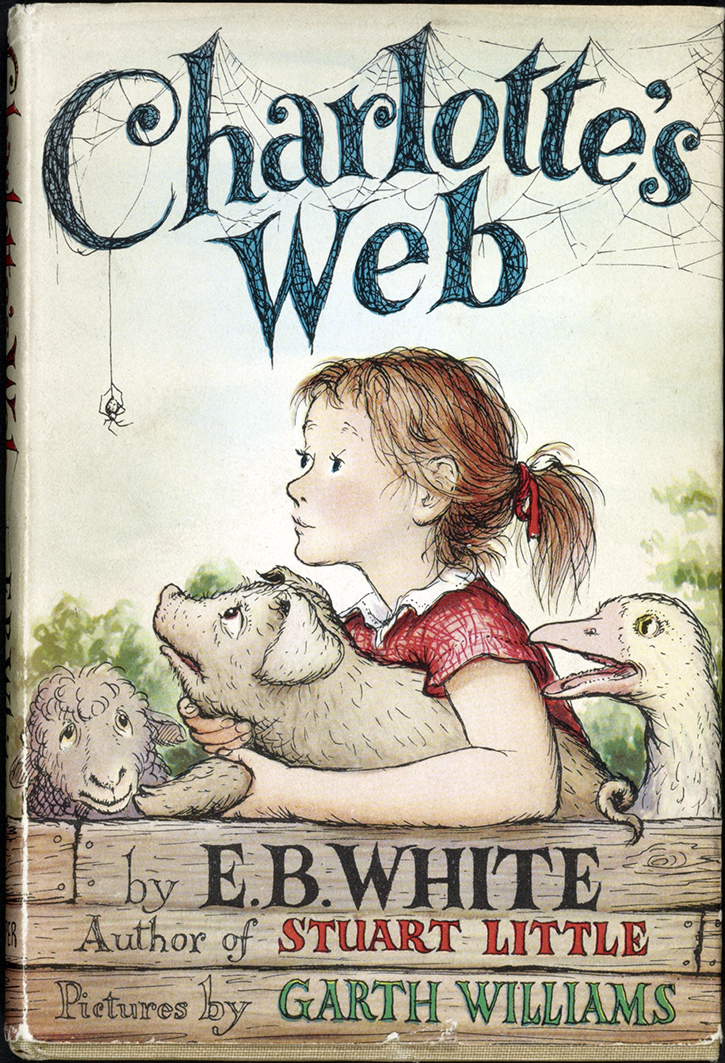 Previous "Growing Up" articles:
Episode 7 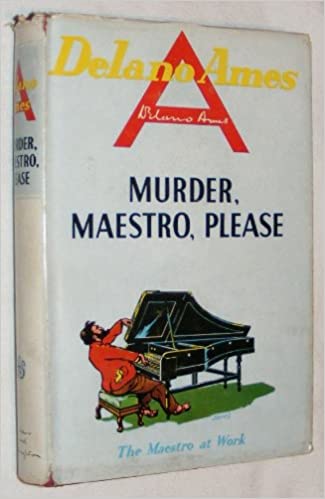 Last month was all
about the music that inspired me in
the 1950s and then the 1960s, which were dominated by the Beatles, of
course. This month I'm going to reminisce about books and music at the
same time. I remember being taught to read by, firstly, my Mum, with
Mabel Lucie Attwell picture books and comics such as Robin, and then my
schoolteacher, Miss Paige, whom I loved dearly. One of my comics had
stories about the characters I heard being spoken about on Listen With
Mother, characters such as Larry the Lamb and Dennis the Dachsund and
their adventures in Toyland. There was also a coloured picture strip
about Andy Pandy, although as we didn't have a television, he was just
a character to me, and it was years later that I first saw him on TV.
At one point in my young life, I remember a visitor to the house, a
serving soldier in the Gloucestershire Regiment, saying that we were
probably the only family in Gloucester who did not have a television.
That may well have been true, but it didn't do us any harm. We had a
decent radio, and later, in 1962, a gramophone that played every speed
of record. Last month was all
about the music that inspired me in
the 1950s and then the 1960s, which were dominated by the Beatles, of
course. This month I'm going to reminisce about books and music at the
same time. I remember being taught to read by, firstly, my Mum, with
Mabel Lucie Attwell picture books and comics such as Robin, and then my
schoolteacher, Miss Paige, whom I loved dearly. One of my comics had
stories about the characters I heard being spoken about on Listen With
Mother, characters such as Larry the Lamb and Dennis the Dachsund and
their adventures in Toyland. There was also a coloured picture strip
about Andy Pandy, although as we didn't have a television, he was just
a character to me, and it was years later that I first saw him on TV.
At one point in my young life, I remember a visitor to the house, a
serving soldier in the Gloucestershire Regiment, saying that we were
probably the only family in Gloucester who did not have a television.
That may well have been true, but it didn't do us any harm. We had a
decent radio, and later, in 1962, a gramophone that played every speed
of record. By then I had a complete set of Acker Bilk LPs, EPs and singles, together with 78 shellac and later plastic discs of The Kingston Trio singing Hang Down Your Head Tom Dooley, a few Cliff Richard singles, several LPs and EPs of Django Reinhardt, and a few classical pieces, notably the overture to the Thieving Magpie by Rossini, which I was learning to play on the violin at the time, and an Embassy Record (Woolworth's own label) of Beethoven's Fifth Symphony. There were a number of places in the city where you could buy records: Hickey's Music Shop, Boots, which also had a lending library and a huge display of books withdrawn from the library which you could buy for a few pence each; and Bon Marché, the four storey plus basement department store which dominated the centre of Gloucester, or rather the eastern side of Gloucester. There were also two branches of Woolworths, one in Southgate (the smaller of the two branches) and one in Northgate. My favourite place for buying records was Bon Marché, and the records and books were in the basement, although during the sale week, there was a huge table crammed with marked down books on the ground floor, and it was there I spent many happy hours rummaging through the books. I remember buying a couple of Bloodhound books (pulp fiction thrillers) and a couple by Joan Butler, a really funny writer who was probably a man, copies of whose books I have been unable to track down in my later life. I also recall buying a title or two by Delano Ames, who wrote superbly funny stories featuring Jane and Dagobert Brown. But in the basement, where the books and records were tucked away in a corner, I used to find the books I really, really craved, the Four Square Tarzan books, the Whiteoaks books (Pan Giants) and the Inspector West and Saint books (also Pan Giants). Those book covers were amazing - photo-like illustrations that were all the rage in the 1950s and early 1960s. It was in the 1960s that book covers nosedived. 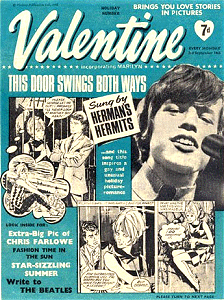 Those Pan Giants (some
of which you can
see on the home page this month (August 2021) and the Four Square
Tarzans were fantastic, and this period remains, for me, my own
personal Golden Age of literature. Of course, it was a while before I
reached that stage of my life where I appreciated those book covers,
but once I could read without the need for an adult to be present to
help me with longer and more difficult words, I never looked back.
Words unlocked a million and more adventures and amazing worlds in a
way that could never be paralleled by TV or the cinema. When I picked
up a borrowed copy of Enid Blyton's The Rockingdown Mystery, with the
aid of Gilbert Dunlop's brilliant illustrations I was able to form an
idea of what Diana really looked like, and I fell in love with her -
she was the first female character, after Maid Marian in The Adventures
of Robin Hood, and Guinevere in King Arthur, that I was first in love
with. Other female characters in treasured books and series, such as
Patricia Holm in the Saint books, and various daughters, sisters and
cousins in the Whiteoaks saga came and went, but it was Diana I always
wanted to meet, and I knew exactly where to find her. In the last issue
I spoke about my love of comics, which was not confined to my own
comics or the ones we brought back from visiting Uncle Les
and
Aunt Grace. Those Pan Giants (some
of which you can
see on the home page this month (August 2021) and the Four Square
Tarzans were fantastic, and this period remains, for me, my own
personal Golden Age of literature. Of course, it was a while before I
reached that stage of my life where I appreciated those book covers,
but once I could read without the need for an adult to be present to
help me with longer and more difficult words, I never looked back.
Words unlocked a million and more adventures and amazing worlds in a
way that could never be paralleled by TV or the cinema. When I picked
up a borrowed copy of Enid Blyton's The Rockingdown Mystery, with the
aid of Gilbert Dunlop's brilliant illustrations I was able to form an
idea of what Diana really looked like, and I fell in love with her -
she was the first female character, after Maid Marian in The Adventures
of Robin Hood, and Guinevere in King Arthur, that I was first in love
with. Other female characters in treasured books and series, such as
Patricia Holm in the Saint books, and various daughters, sisters and
cousins in the Whiteoaks saga came and went, but it was Diana I always
wanted to meet, and I knew exactly where to find her. In the last issue
I spoke about my love of comics, which was not confined to my own
comics or the ones we brought back from visiting Uncle Les
and
Aunt Grace. 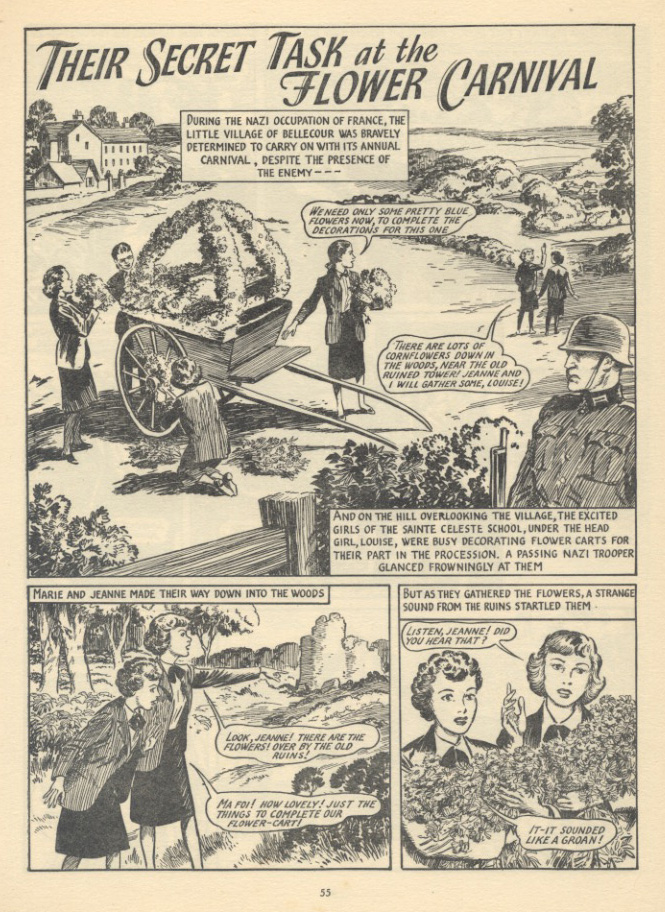 My sister Jean, four
years older than
me, and sadly no longer with us after passing away last year (2020)
also had her weekly comics, and her annuals, which comprised Girls
Crystal and Schoolfriend, and the Coronet Books for Girls that
corresponded to my treasured Commander Books for Boys from 1957-1960,
of which I currently have all four Commanders and three Coronets in my
collection. They are brilliantly illustrated by Robert McGillivray with
black and white drawings, and the covers are magnificently illustrated
in full colour dust jackets that are inspirational and hugely
entertaining in their own right. I knew that I would find Enid Blyton's
Diana in many of the picture strips in Jean's Girls Crystal and School
Friend - not the actual Diana, of course, but similar girls who went to
boarding school and had terrific adventures. I was hooked on school
stories from a very early age - almost all of the school picture strips
in LION were about boarding school boys, and Girls Crystal and School
Friend were published by Fleetway and had the same story composition as
my LION and TIGER comics. So, when Jean had finished with her two
comics, I snaffled them and read them in the comfort of my bedroom,
then put them with my own stack of comics in a cardboard box under my
bed. She rarely asked for them back, and was happy for me to take them
and read them. Siimilarly, I always sneaked a look at her Girls Crystal
and School Friend annuals, knowing that as soon as I had read my Lion,
Tiger and Commander books from cover to cover, I would ask her if I
could borrow her annuals, and my reading joy would be simply doubled. My sister Jean, four
years older than
me, and sadly no longer with us after passing away last year (2020)
also had her weekly comics, and her annuals, which comprised Girls
Crystal and Schoolfriend, and the Coronet Books for Girls that
corresponded to my treasured Commander Books for Boys from 1957-1960,
of which I currently have all four Commanders and three Coronets in my
collection. They are brilliantly illustrated by Robert McGillivray with
black and white drawings, and the covers are magnificently illustrated
in full colour dust jackets that are inspirational and hugely
entertaining in their own right. I knew that I would find Enid Blyton's
Diana in many of the picture strips in Jean's Girls Crystal and School
Friend - not the actual Diana, of course, but similar girls who went to
boarding school and had terrific adventures. I was hooked on school
stories from a very early age - almost all of the school picture strips
in LION were about boarding school boys, and Girls Crystal and School
Friend were published by Fleetway and had the same story composition as
my LION and TIGER comics. So, when Jean had finished with her two
comics, I snaffled them and read them in the comfort of my bedroom,
then put them with my own stack of comics in a cardboard box under my
bed. She rarely asked for them back, and was happy for me to take them
and read them. Siimilarly, I always sneaked a look at her Girls Crystal
and School Friend annuals, knowing that as soon as I had read my Lion,
Tiger and Commander books from cover to cover, I would ask her if I
could borrow her annuals, and my reading joy would be simply doubled. Christmases brought all manner of things, such as a torch with three different coloured lenses, white, green and red, enabling you to shine green and red light onto things as well as the conventional white; a transistor radio kit which I nagged my Dad to put together Christmas afternoon, ignoring the fact he had just come back from the pub with my uncles, and was very much the worse for wear. Needless to say, he couldn't get the transistor radio to work, and I had to wait a few weeks until Jean lent me the 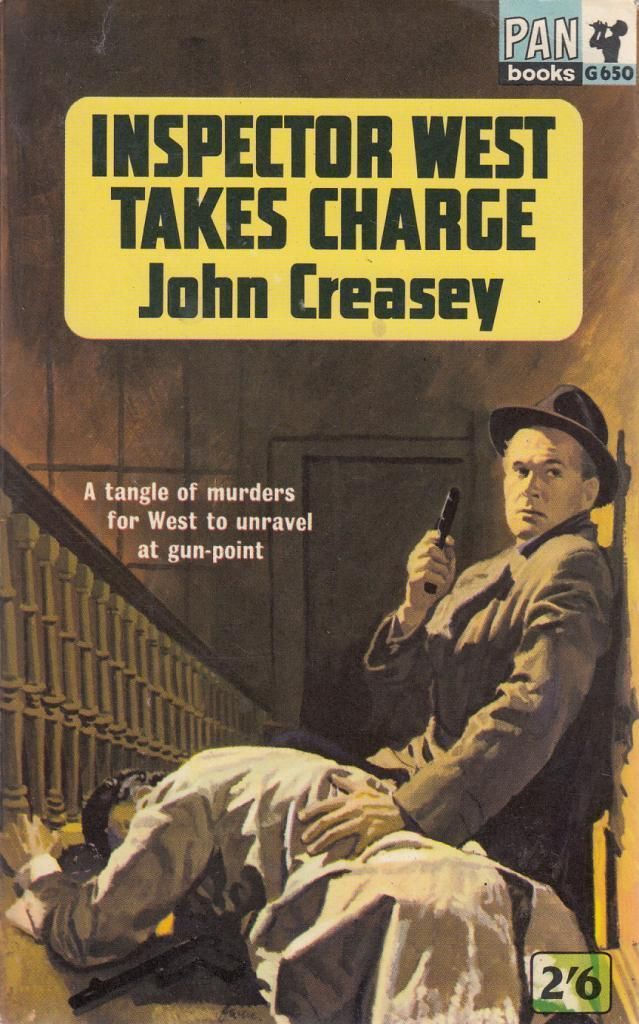 rest of the money I
needed to
buy a proper transistor radio.There were Magic Robot games, compendia
of games such as Ludo, Snakes and Ladders; there was always a tin of
Sharps toffees and a box of Turkish Delight; there was a real football
one year, and football boots, both of which I had asked for, but my
treasured gifts were always my books. In those days, Annuals of comics
such as Lion, Tiger, Girls Crystal and School Friend were 158 pages
long. Not as many pages as my Commander Book for Boys, also regular
gifts from 1957-1960, which was well in excess of 500 pages, but
nevertheless, a superb mix of picture and text stories, quizzes and
features. 158 pages! When we were buying annuals for our two younger
children, Chris and Sammy, you would be lucky to get sixty pages...
These 1960s annuals were meant to last you several months of original
and brilliant reading. Mine lasted a few days, then I was off searching
for something else to read. In previous episodes of my memoirs, I've
spoken about the public library bookcases in the Primary School, which
acted as a branch library for the residents of Brockworth. They were
opened two or three times a week, and to me they were enormous. Well,
until I became almost six feet tall, my memory of those bookcases was
of them towering over me, and they were crammed with books. From about
the age of ten (my last year at primary school - I took the 11+ exam
when I was ten, passed, one of only three pupils in my year, and went
on to grammar school, entering the hallowed hall of the Crypt Grammar
School, Gloucester, in September of 1957, two weeks before my eleventh
birthday) I made a beeline for those bookcases with my Mum, another
avid reader, and we would come away with four or five books each. The
left hand bookcase contained fiction of all genres, the right hand
bookcase contained nonfiction and children's books. By this time I had
a reading list of a couple of dozen favourite fiction writers, such as
John Dickson Carr, John Creasey, Leslie Charteris, Mazo de La Roche,
Carter Dickson, Agatha Christie, etc., etc. I didn't discover Dennis
Wheatley until I was about twelve or thirteen. So, after exhausting all
of the crime writers in the left hand bookcase, I started on romantic
fiction, and devoured all that they had, relishing in particular those
stories set in hospitals and doctors' surgeries, thrilled
when
the hero and the heroine finally came together. rest of the money I
needed to
buy a proper transistor radio.There were Magic Robot games, compendia
of games such as Ludo, Snakes and Ladders; there was always a tin of
Sharps toffees and a box of Turkish Delight; there was a real football
one year, and football boots, both of which I had asked for, but my
treasured gifts were always my books. In those days, Annuals of comics
such as Lion, Tiger, Girls Crystal and School Friend were 158 pages
long. Not as many pages as my Commander Book for Boys, also regular
gifts from 1957-1960, which was well in excess of 500 pages, but
nevertheless, a superb mix of picture and text stories, quizzes and
features. 158 pages! When we were buying annuals for our two younger
children, Chris and Sammy, you would be lucky to get sixty pages...
These 1960s annuals were meant to last you several months of original
and brilliant reading. Mine lasted a few days, then I was off searching
for something else to read. In previous episodes of my memoirs, I've
spoken about the public library bookcases in the Primary School, which
acted as a branch library for the residents of Brockworth. They were
opened two or three times a week, and to me they were enormous. Well,
until I became almost six feet tall, my memory of those bookcases was
of them towering over me, and they were crammed with books. From about
the age of ten (my last year at primary school - I took the 11+ exam
when I was ten, passed, one of only three pupils in my year, and went
on to grammar school, entering the hallowed hall of the Crypt Grammar
School, Gloucester, in September of 1957, two weeks before my eleventh
birthday) I made a beeline for those bookcases with my Mum, another
avid reader, and we would come away with four or five books each. The
left hand bookcase contained fiction of all genres, the right hand
bookcase contained nonfiction and children's books. By this time I had
a reading list of a couple of dozen favourite fiction writers, such as
John Dickson Carr, John Creasey, Leslie Charteris, Mazo de La Roche,
Carter Dickson, Agatha Christie, etc., etc. I didn't discover Dennis
Wheatley until I was about twelve or thirteen. So, after exhausting all
of the crime writers in the left hand bookcase, I started on romantic
fiction, and devoured all that they had, relishing in particular those
stories set in hospitals and doctors' surgeries, thrilled
when
the hero and the heroine finally came together. 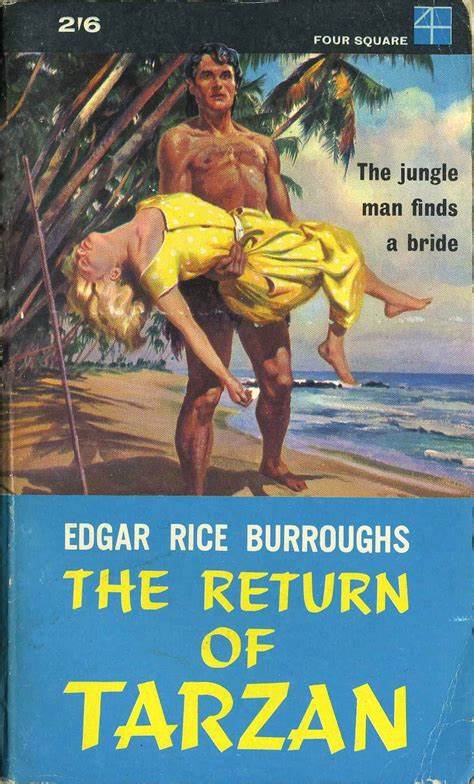 At the same time I was
buying copies of
weekly magazines like Romeo, Valentine etc., in the hope of finding
pictures of my favourite musical artistes like Acker Bilk and Bobby
Darin, but also so that I could read the brilliant romantic picture
stories. I liked nothing better than to go to bed early during the
summer months when it was still light and I would be able to sit up in
bed and read for a couple of hours. If there was a football game going
on up at the recreation field, I'd join in, then walk the two hundred
yards home and finish my day with reading for an hour or so, but if
there was nothing going on, it would be two or even three hours of
solid reading with my transistor radio playing quietly in the
background. Occasionally there was a radio play or serial I wanted to
listen to, and when John Wyndham's The Day of the Triffids was
announced for broadcast, I was over the moon - it was one of my
favourite SciFi books. But the very first episode, when just about
everyone wakes up blind after the comet display the previous evening,
the wailing and crying from the cast was so realistic, it really upset
me. I found that I couldn't listen to it, I went to bed and read
instead. Reading was the single most imformative thing that happened to
me, and it opened up a million worlds of adventure to me in a very
short space of time. There weren't enough hours in the day for what I
wanted to read: comics (Lion, Tiger, Girls Crystal, School Friend,
Tarzan, Superman, Batman, Superboy, SuperGirl, Wonder Woman); annuals,
Saint books, Whiteoaks books, Robin Hood, King Arthur, Lorna Doone (I'd
heard the serialisation on the Home Programme and went out and bought
the book. It remains a firm favourite), Oliver Twist, The Three
Musketeers, Various Pan books of Horror Stories (these were really
scary!), Westerns, Romantic fiction, Dennis Wheatley, John Creasey's
Inspector West series; and then there were my Dad's books. Either side
of the fireplace he'd put up bookshelves. One side housed his book
collection: Aldous Huxley (never got on with him); Jan de Hartog
(Captain Jan); Hammond Innes (various); some war books, a book about
Churchill Jean and I bought for him for Christmas one year, a
three-volume encyclopedia which had a beautiful picture of a half-naked
Kenyan girl that thrilled and delighted me; and his Companion Book Club
books. These were uniformly bound and made a very nice display - you
still occasionally see them at car boot sales. I was allowed to read
some of them, but not all, at least not until I was becoming a young
adult, by which time I had joined Gloucester City Library. This was
recommended to me by a schoolmate, and it was housed in an enormous
municipal building at the back of Southgate, and inside it I found more
books than I could ever have dreamed of. Until you were sixteen you had
to have the approval of an adult relative, so the next time
Mum
and I went to town, I asked her to sign on my behalf to say that I
would take care of any book(s) I borrowed from this library. My library
card gave me access not only to the children's books, of which there
were literally thousands, but also to the adult section, because I was
fourteen years old at that time. I borrowed books from Gloucester City
Library right up until we left Gloucester in 1963. And then I found
myself in Southend on Sea, and their public library was even bigger...
that's for next time. In the meantime, I hope you're enjoying reading
my memories as much as I'm enjoying writing them! See you in September,
when I shall be seventy-five years old! By the way, if you're reading
this page before the home page, you can catch up on the home page with
all of the brilliant Carboot sale and charity shop bargains that have
come my way this past month - loads and loads of superb finds - a
bumper month! See you September 1st! At the same time I was
buying copies of
weekly magazines like Romeo, Valentine etc., in the hope of finding
pictures of my favourite musical artistes like Acker Bilk and Bobby
Darin, but also so that I could read the brilliant romantic picture
stories. I liked nothing better than to go to bed early during the
summer months when it was still light and I would be able to sit up in
bed and read for a couple of hours. If there was a football game going
on up at the recreation field, I'd join in, then walk the two hundred
yards home and finish my day with reading for an hour or so, but if
there was nothing going on, it would be two or even three hours of
solid reading with my transistor radio playing quietly in the
background. Occasionally there was a radio play or serial I wanted to
listen to, and when John Wyndham's The Day of the Triffids was
announced for broadcast, I was over the moon - it was one of my
favourite SciFi books. But the very first episode, when just about
everyone wakes up blind after the comet display the previous evening,
the wailing and crying from the cast was so realistic, it really upset
me. I found that I couldn't listen to it, I went to bed and read
instead. Reading was the single most imformative thing that happened to
me, and it opened up a million worlds of adventure to me in a very
short space of time. There weren't enough hours in the day for what I
wanted to read: comics (Lion, Tiger, Girls Crystal, School Friend,
Tarzan, Superman, Batman, Superboy, SuperGirl, Wonder Woman); annuals,
Saint books, Whiteoaks books, Robin Hood, King Arthur, Lorna Doone (I'd
heard the serialisation on the Home Programme and went out and bought
the book. It remains a firm favourite), Oliver Twist, The Three
Musketeers, Various Pan books of Horror Stories (these were really
scary!), Westerns, Romantic fiction, Dennis Wheatley, John Creasey's
Inspector West series; and then there were my Dad's books. Either side
of the fireplace he'd put up bookshelves. One side housed his book
collection: Aldous Huxley (never got on with him); Jan de Hartog
(Captain Jan); Hammond Innes (various); some war books, a book about
Churchill Jean and I bought for him for Christmas one year, a
three-volume encyclopedia which had a beautiful picture of a half-naked
Kenyan girl that thrilled and delighted me; and his Companion Book Club
books. These were uniformly bound and made a very nice display - you
still occasionally see them at car boot sales. I was allowed to read
some of them, but not all, at least not until I was becoming a young
adult, by which time I had joined Gloucester City Library. This was
recommended to me by a schoolmate, and it was housed in an enormous
municipal building at the back of Southgate, and inside it I found more
books than I could ever have dreamed of. Until you were sixteen you had
to have the approval of an adult relative, so the next time
Mum
and I went to town, I asked her to sign on my behalf to say that I
would take care of any book(s) I borrowed from this library. My library
card gave me access not only to the children's books, of which there
were literally thousands, but also to the adult section, because I was
fourteen years old at that time. I borrowed books from Gloucester City
Library right up until we left Gloucester in 1963. And then I found
myself in Southend on Sea, and their public library was even bigger...
that's for next time. In the meantime, I hope you're enjoying reading
my memories as much as I'm enjoying writing them! See you in September,
when I shall be seventy-five years old! By the way, if you're reading
this page before the home page, you can catch up on the home page with
all of the brilliant Carboot sale and charity shop bargains that have
come my way this past month - loads and loads of superb finds - a
bumper month! See you September 1st!The small print: Books Monthly, now well into its 24th year on the web, is published on or slightly before the first day of each month by Paul Norman. You can contact me here. If you wish to submit something for publication in the magazine, let me remind you there is no payment as I don't make any money from this publication. If you want to send me something to review, contact me via email at paulenorman1@gmail.com and I'll let you know where to send it.
|
|
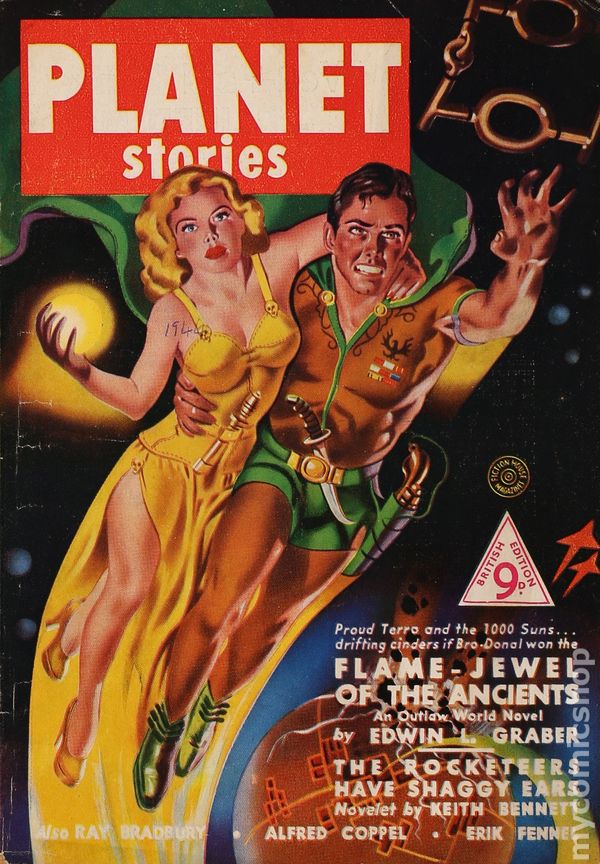
,
|
